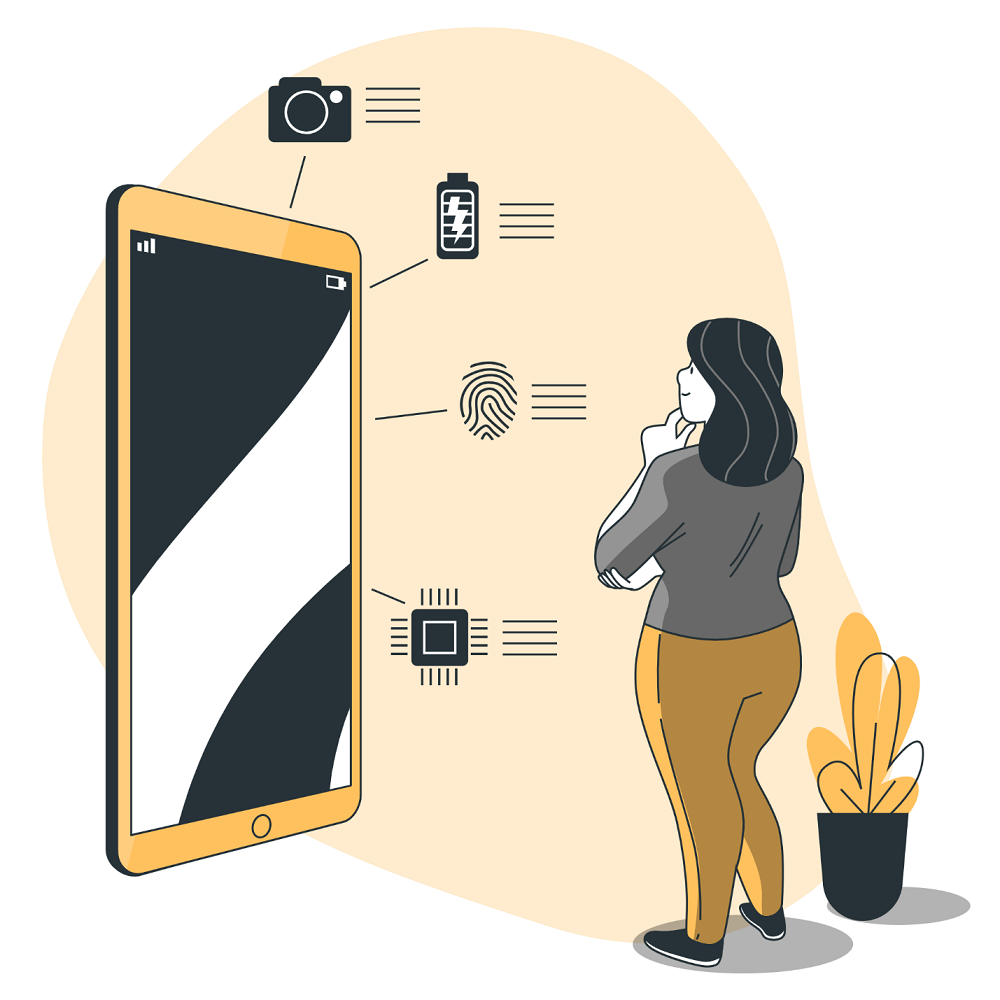A prototype is an initial, visual presentation of a mobile app. Because these are working models, app developers use prototypes to test the essential functionality, concept feasibility, and user experience. Considering the value prototyping adds to the final product, it is one of the earliest and most important steps in the app development process.
This article covers the five primary benefits of prototyping and the process of creating one for your mobile app.
4 Steps To Create A Prototype for Mobile App
Follow these four quick steps to make your first prototype:
- Identify the goals
Each new app has an objective to fulfill, a problem to solve, or a value to add for the target users. Because a prototype should accurately reflect the functionality of the features and performance of the app, we recommend that users come up with at least three goals an app would fulfill, then associate one feature with each.
- Map a user journey
Construct a step-by-step journey for an app user based on the features you want to add to your mobile app. For example, start with sign-up or sign in, then the introductory screen, the sidebars, the selection of options, and so on. End the user journey to the point where the user exits the app.
- Wireframe user interfaces
Once you have the user journey, start sketching the screen designs. Draw a diagram for the sign-up screen with buttons, the sidebar, the notification panel, etc.
- Connect the wireframes and add motion
After you have your app’s user interface ready (the wireframes we created in the previous step), connect the wireframes, and turn it into a high-fidelity prototype.
Once your prototype is ready, you can use it to collect feedback, test for conceptual errors and feasibility, and draw other benefits discussed in the next section of the article.
- 5 Popular Tools used for Prototyping
Designers use these five tools for wireframing and prototyping. While all of these are professional tools, all are easy to understand and use. Though Adobe Xd. still has a learning curve involved, once you have acquainted yourself with the primary interface and have created a screen or two, the rest gets easier!
- Adobe Xd.
- Axure RP
- InVision
- Figma
- MockPlus
Top 5 Benefits of Building Prototypes
Here are 5 primary advantages of designing prototypes:
- User Experience Testing
The most significant benefit of prototyping is that you can see the initial version of your app performing. If not real, the prototype is responsive enough to understand if an app is simple, user-friendly, user-centric, and easy to navigate. For reference, these are the must-have qualities for the success of any mobile app, and that’s why most application development services include prototyping as a significant milestone.
- Collect user feedback
Prototypes make it easier to gather user feedback. You can test user acceptance, their response to the concept and the solution, and decide if the mobile app would be successful in the long run. Secondly, you can add or subtract additional features or choose to update them in your MVP later on. The point is, your app prototype can help you gather enough data for future improvements.
- Improvements on the go
Once you have a prototype ready, you can assess it for performance, speed, functionality, conceptual design, and user experience. Also, share it with the client (if you designed it for other stakeholders), target users, or penetration testers to learn the vulnerability of the concept. Once you have identified errors in the proposed product, it’s easier to improve it even before launch.
- Application for investment
Prototypes are an ideal tool to apply for seed funding and other forms of investment. All you’ll have to do is create a prototype that accurately reflects the vision and performance of your potential mobile app, then present it to stakeholders and influence their investment decisions.
- Marketing the app before launch
Once your app idea is validated, it’s time to create hype in the target market. You can choose to make a quick landing page with your prototype or share it in community groups to forward the narrative even before the app goes live on the app store.
Wrapping Up…
While it is ideal for creating a prototype to loop in stakeholders and clients, build one that’s an accurate representation of the mobile app’s performance. It is highly recommended to test on predetermined benchmarks, make real-time improvements, and most importantly, stay neutral with the features presented in the prototype.
Author Bio:
Saba Sohail is a tech enthusiast with academic majors in Economics and Information Sciences. A content strategist by day, her favorite niches are design thinking, cybersecurity, graphics, and digital marketing. She is deeply interested in sharing how leading technologies can disrupt the overall business ecosystem and how we can leverage tech to give back to the community.
